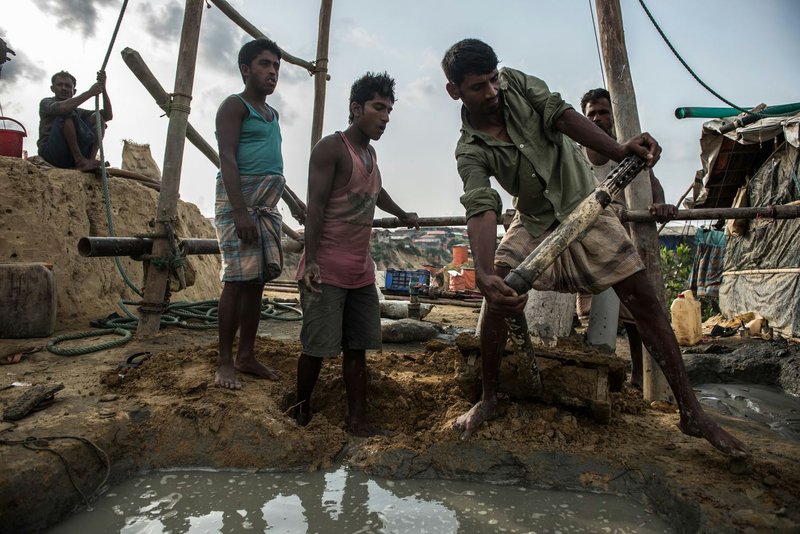BALUKHALI, Bangladesh -- In Bangladesh, the world's largest refugee camp is falling apart. With the annual cyclone and monsoon seasons approaching this month and next, hundreds of thousands of Rohingya Muslim refugees are steeling themselves for the camp's further collapse.
But most of the refugees, like Hamit Hussein, have nowhere else to go.
Hussein, trying to hold together loose soil, recently stuffed sandbags into the side of a cliff where his hut of bamboo and plastic sheets was perched precariously. Days earlier, a few feet of the hillside broke away in a cascade of earth. No one was hurt, but it was a wake-up call.
"I cannot stay here. I have children," said Hussein, who has lived in the camp since August. "The hill is collapsing in the dry season. If it rains even a little, it will be destroyed."
About 700,000 Rohingya Muslims from Buddhist-majority Burma have poured onto a thin spit of land in southeastern Bangladesh, fleeing a brutal crackdown by Burma's army that the United Nations has called ethnic cleansing.
Rohingya survivors and human-rights groups accuse Burma's forces of torching villages, raping women and murdering civilians in response to a series of attacks by a small Rohingya insurgent group. Doctors Without Borders estimated in December that at least 6,700 were killed in the first month of the crackdown. Burma has denied many of the allegations.
The Bangladeshi camps -- carved out of jungle -- have become overcrowded slums of flimsy shelters teetering on steep, unstable slopes. Aid groups warn that the approaching storm seasons could prove deadly. Last year, before the latest influx of refugees, a cyclone damaged 70 percent of the shelters in the camps.
"Our initial mapping study showed 120,000 at grave risk of floods and landslides," said Fiona MacGregor, spokesman for the United Nations' International Organization for Migration. But, she added: "Pretty much everyone is at risk to some extent."
In recent weeks, the season's first few squalls turned valleys into swamps and shredded dozens of shelters.
"The tarp was stripped off by wind and the house was destroyed. Dishes, my stoves, everything," Rukiya Begum said while standing in the frame of her hut, a loose plastic sheet flapping overhead. "I'm afraid to stay here."
The earth in the region is fine sand packed into hard dunes that disintegrate at a touch. Small landslides are common on the deforested slopes and have killed at least two children. Many areas have no proper drainage or access roads for ambulances.
"The fact that it looks unprepared is absolutely how it really is," said Tess Elias, country director in Bangladesh for the Danish Refugee Council, an aid group managing parts of the camps.
With worse weather to come, Doctors Without Borders is stockpiling bandages and intravenous fluids for mass-casualty events, and warns of disease outbreaks if floodwaters overflow latrines, turning low-lying areas into festering pools of rainwater and human waste.
Marcella Kraay, the aid group's project coordinator in the region, warned of outbreaks of cholera, an intestinal disease: "It's going to be humid, wet, unsanitary conditions."
For now, Bangladesh's government has refused to allow refugees the freedom of movement that might allow them to find safer places to live beyond the camp's boundaries.
Aid workers complain that the authorities, wary of establishing long-term presence of hundreds of thousands of refugees in an already densely populated nation, have mostly banned the use of stronger building materials such as concrete, relegating the refugees to shelters made of bamboo and plastic.
Burma is often called Myanmar, a name that military authorities adopted in 1989. Some nations, such as the United States and Britain, have refused to adopt the name change.
A Section on 05/05/2018

